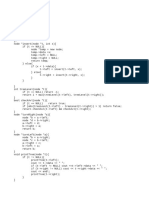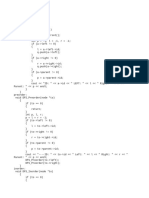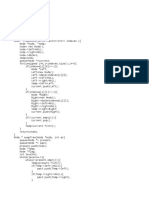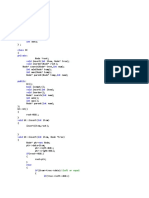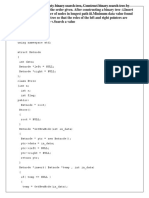0% found this document useful (0 votes)
3 views4 pagesSegment Tree - Max
The document describes the implementation of a segment tree for maximum value queries, including the building, querying, and updating processes. It outlines the concepts of complete and partial overlapping segments for querying. The provided code demonstrates the construction of the segment tree and the handling of updates and queries using a divide and conquer approach.
Uploaded by
yrgrl19sharmaCopyright
© © All Rights Reserved
We take content rights seriously. If you suspect this is your content, claim it here.
Available Formats
Download as DOCX, PDF, TXT or read online on Scribd
0% found this document useful (0 votes)
3 views4 pagesSegment Tree - Max
The document describes the implementation of a segment tree for maximum value queries, including the building, querying, and updating processes. It outlines the concepts of complete and partial overlapping segments for querying. The provided code demonstrates the construction of the segment tree and the handling of updates and queries using a divide and conquer approach.
Uploaded by
yrgrl19sharmaCopyright
© © All Rights Reserved
We take content rights seriously. If you suspect this is your content, claim it here.
Available Formats
Download as DOCX, PDF, TXT or read online on Scribd
/ 4







